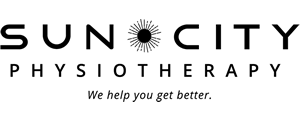Thoracic Outlet Syndrome: another source of neck and arm pain.
It’s well known that pain in your neck, radiating down the arm can be a result of an irritated nerve root in your neck. What’s often overlooked, is that compression can occur further down the nerve continuum as they bundle together and exit the neck. These nerve bundles are partnered with major blood vessels as they travel through the shoulder and further into the upper arm. As they exit the neck, these neurovascular structures become susceptible to compression. Knowing this, we now consider the possibility of compression of not just the nerves, but the blood vessels too.
Thoracic Outlet Syndrome (TOS) is a complex presentation of signs and symptoms that result from compression of the neurovascular bundle as it emerges from the thorax and enters the upper limb. The thoracic outlet is the space bordered by the scalene muscles, first rib, and clavicle. The neurovascular structures pass from the neck and thorax into the axilla (arm pit region), and continue to branch further into the upper arm, to forearm, and hand. TOS is more common in women, particularly those with poor muscular development, poor posture, or both.
In the office, we assess and diagnose injuries related to repetitive upper extremity use or trauma. Swimming, baseball, tennis, and volleyball, are common sports that may bring on symptoms of TOS. Functional and biomechanical assessment of these patients who engage in repetitive and extreme abduction (out to side) and external rotation (outward rotation) of the shoulder, often demonstrate TOS signs and symptoms. Other patient populations who may develop TOS include those who are in sustained poor postures in their activities of daily living and work, and tend to develop shortened chest and shoulder structures, and weak/lengthened neck and upper back structures.
Anatomically, TOS can be a result of bony and soft tissue factors. Bony causes often involve rudimentary or “extra” ribs which increases the risk of compression, e.g. cervical rib. Soft tissue factors can include muscular tightness or hypertrophy related to sport. Trauma or mechanical stress to the neck, shoulders, upper back, or upper extremities can bring on signs and symptoms.
The common presentation of TOS includes a high degree of variability. Most people describe a vague and often confusing source. Pain can originate from the root of the neck and radiate to the entire arm. Strength loss can occur. Depending on the structures being compressed, people can also experience numbness, swelling, tingling in the arm and hand, heaviness in the arm, loss of movement, rapid fatigue, dull aching, cold and discolouration.
Our challenge as physical therapists is to distinguish by specific testing, whether or not you present with a true TOS. From the comprehensive list of signs and symptoms above, we can easily see how TOS can mimic neck injury (disc, nerve root pain), and even shoulder and elbow injury.
Physical therapy treatment addresses postural abnormalities and muscle imbalance, in order to assist in alleviating symptoms by relieving pressure on the thoracic outlet. We work to minimize tension directly around the nerve entrapment points. Manual therapy and exercise strategies would assist in correcting muscles that have shortened or lengthened because of poor posture. It is also important to take into consideration a patient’s activities of daily living, work environment, sleep positions, etc. Surgical intervention is often considered in severe cases of blood vessel compression and compromise.
Symptoms often resolve with conservative physical therapy in 90% of individuals, with good ability to return to previous lifestyle with little difficulty.

